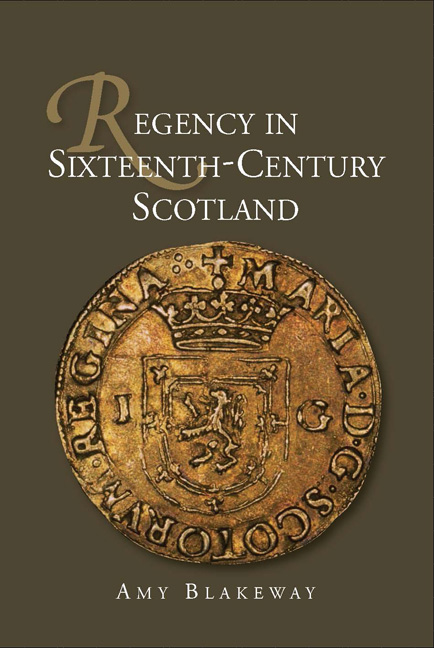Book contents
- Frontmatter
- Dedication
- Contents
- List of Figures and Tables
- Acknowledgements
- List of Abbreviations
- Timeline of Regents and Monarchs
- Introduction
- 1 Concepts of Regency
- 2 Concepts of Regency in Practice
- 3 Regency Finances
- 4 Households and Courts
- 5 Justice and Regency
- 6 Regency Diplomacy
- Conclusion
- Appendix 1 The Treasurer's Accounts
- Appendix 2 The Comptroller's Accounts
- Appendix 3 The Collectors of the Thirds' Accounts
- Appendix 4 Justice Ayres in Sixteenth-Century Scotland
- Bibliography
- Index
Appendix 2 - The Comptroller's Accounts
Published online by Cambridge University Press: 05 May 2015
- Frontmatter
- Dedication
- Contents
- List of Figures and Tables
- Acknowledgements
- List of Abbreviations
- Timeline of Regents and Monarchs
- Introduction
- 1 Concepts of Regency
- 2 Concepts of Regency in Practice
- 3 Regency Finances
- 4 Households and Courts
- 5 Justice and Regency
- 6 Regency Diplomacy
- Conclusion
- Appendix 1 The Treasurer's Accounts
- Appendix 2 The Comptroller's Accounts
- Appendix 3 The Collectors of the Thirds' Accounts
- Appendix 4 Justice Ayres in Sixteenth-Century Scotland
- Bibliography
- Index
Summary
Background to Figure 2: Income from the Baillies and Custumars
The accounts of the baillies and custumars provide information regarding the comptroller's income which can help to fill gaps in the comptroller's own records. Every item of income the comptroller received was, of course, a payment from someone else. Each transaction therefore appeared in two sets of accounts: those of a local official as an item of expenditure, and, those of the central official as an item of income. Indeed, since the baillies ad extra and the custumars were usually particularly significant income streams for the comptroller, the information provided by their accounts can give a good broad indication of his overall income.
The information provided by the accounts of the baillies and custumars nevertheless comes with significant caveats. Local officials such as these often failed to attend the exchequer for multiple years at a time. As such, when they did attend the exchequer, paperwork relating to transactions stretching back over several years would all be entered into the rolls at the same point. However, although officials might not have attended the exchequer in a given year, they often ensured that the comptroller nevertheless received the money he was owed. These sums were duly recorded in the comptroller's accounts, but the local official might not come to the exchequer to make an account of his expenditure. The practice of making a payment in one year but only accounting for it several years later is also clearly illustrated on occasions when the comptroller changed part way through the year. Since local officials had paid monies owing to two different people, two payments were recorded.
This gap between transaction and record is problematic since it is not always possible to distinguish when particular sums were paid. The figures for income from the custumars and baillies in Figure 2 therefore shows the year in which money was recorded in the exchequer.
- Type
- Chapter
- Information
- Regency in Sixteenth-Century Scotland , pp. 245 - 250Publisher: Boydell & BrewerPrint publication year: 2015

